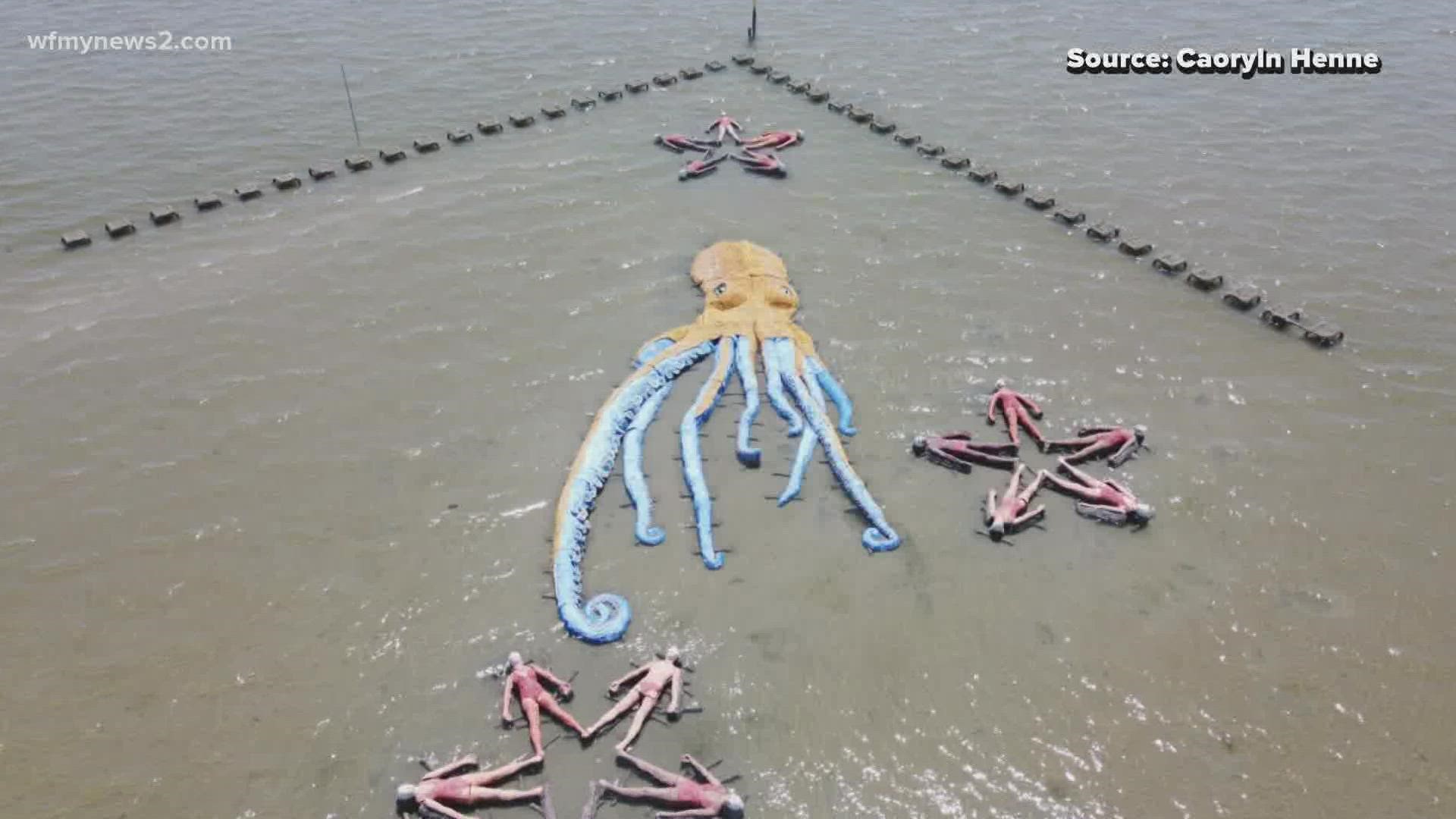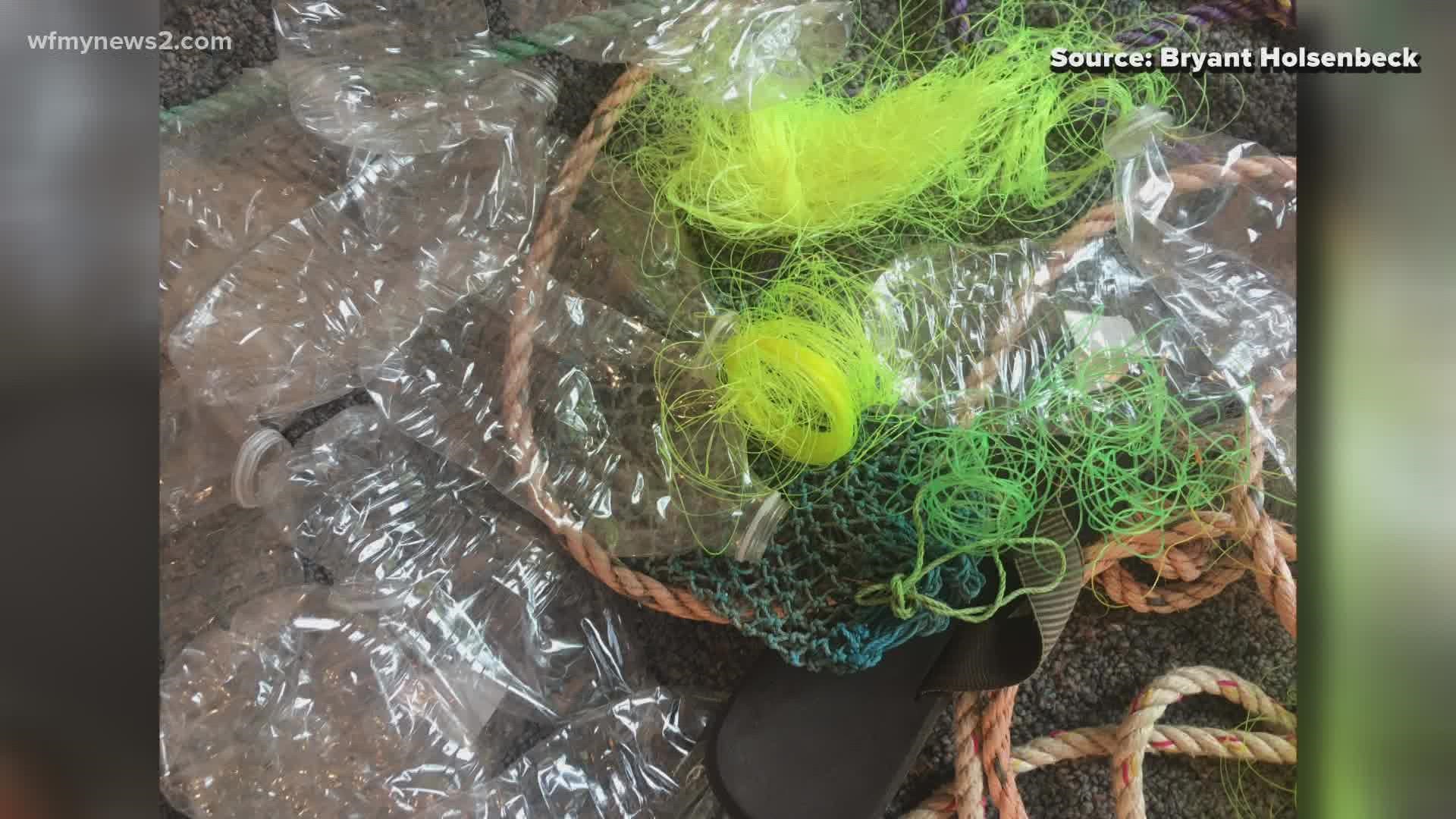GREENSBORO, N.C. — It's an art exhibit that draws our attention to our most precious resource. Water.
“Through public art installations, a multi-faceted gallery exhibition, and robust programming, H2O spurs community conversations and calls to action to protect and preserve our water systems,” explained Barbara Richter, GreenHill’s, Executive Director. “Exhibiting artists explore converging disciplines of art and science to innovate solutions, raise awareness, and re-think the roles we all can play to create a better tomorrow.”
Curator Edie Carpenter shared: “Artists in this exhibition engage us in a deeper understanding of our relationship to water as individuals and communities. Their works invite us to reflect on such ecological challenges as the proliferation of single-use plastics, pollution of groundwater and oceans, as well as questions of social justice raised by the loss of access to clean water. H2O offers creative approaches to repurposing waste products and advocates for change.”
The centerpiece of the H2O exhibition is a cascading public “waterfall” composed of 10,000 plastic bottles by environmental artist Bryant Holsenbeck. Located in the atrium of the Greensboro Cultural Center.
“Holsenbeck’s work offers a compelling example of community-building around environmental stewardship”, explained Barbara Richter. “Collaborating partners for sourcing and prepping discarded bottles for the mammoth installation include Unifi Corporation (a global leader in recycling plastics), Greensboro Day School, and The Rotary Club of Greensboro.” In advance of the exhibition, workshops at GreenHill offer public opportunities to help build the 'waterfall' through bottle cutting and binding spiraled plastic. "When H2O is over," explained Richter, "repurposed water bottles will transform into high-performance fibers at Unifi’s Reidsville plant."
The H2O exhibition was created in partnership with the City of Greensboro’s Department of Water Resources. GreenHill Director of Education Jaymie Meyer notes: “Many North Carolinians are not aware that they, as individuals, impact our waterways. People may not realize, for instance, that 80% of ocean debris comes from inland sources and stormwater drains that channel debris directly into streams.”
The exhibition opens this Saturday, March 5th, and runs through June 25th.


